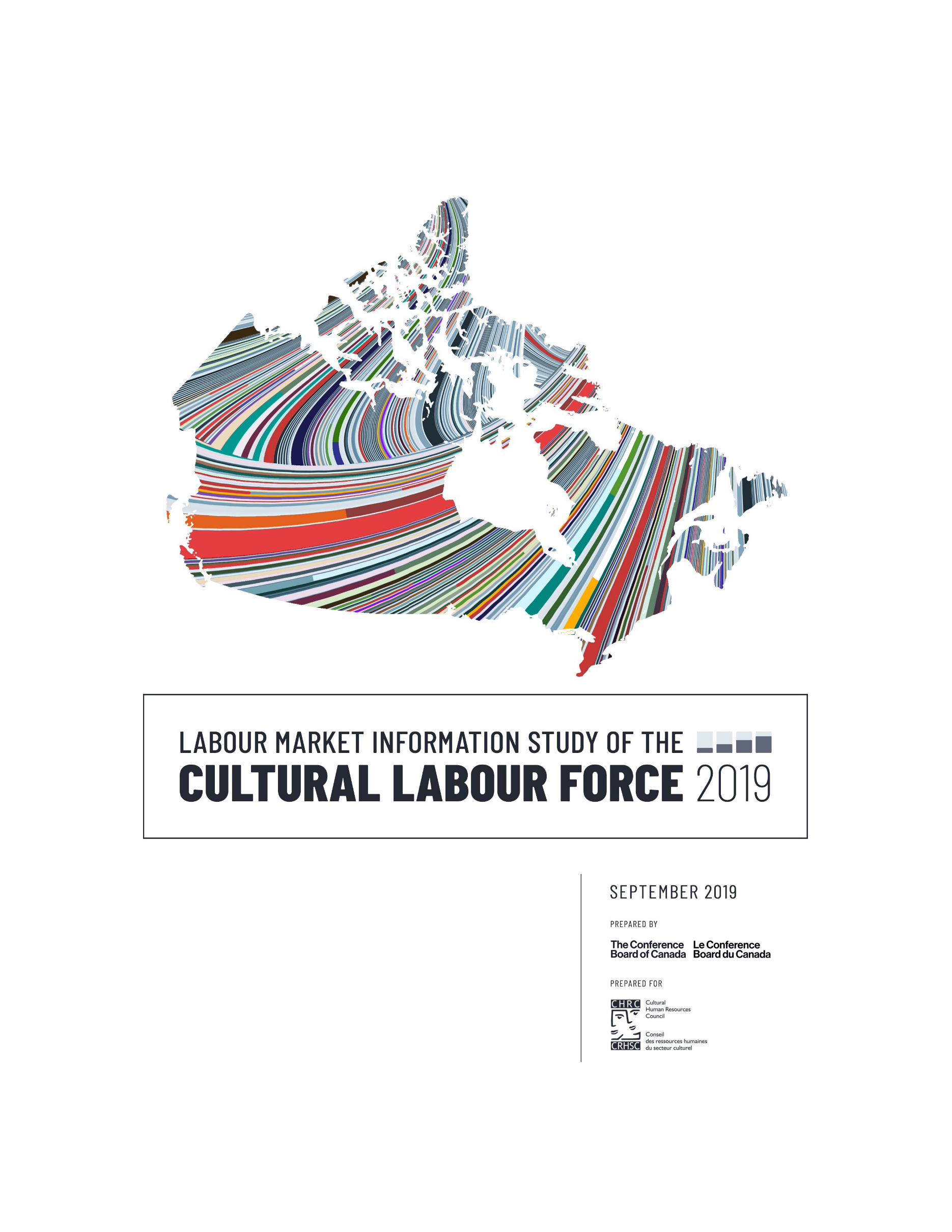1. Introduction
Many studies have demonstrated that a vibrant arts and cultural sector generates a wide range of socioeconomic benefits to individuals and to society. Indeed, it has been shown that arts and culture play a vital role in improving economic performance, in attracting talent, business, and investment, and in providing positive social impacts on quality of life, health and well-being, community development, and social cohesion.[1]
A growing, dynamic cultural sector is central to Canada’s success as a creative, knowledge-based economy. The cultural sector also serves as a magnet for skilled and creative people as Canada becomes increasingly dependent on international migration to sustain the size of its national labour force.
In recent years, the labour market for the cultural sector has grown increasingly complex, changing rapidly and demanding new skills. The ability of individuals to respond to these changes requires accurate and up-to-date labour market information about the sector.
The Conference Board of Canada is pleased to present this report providing labour market information about Canada’s cultural sector. Broadly defined, labour market information is information about the conditions in or operations of a specific labour market. This report presents an analysis of the cultural labour force in Canada, including a profile of the cultural sector of the economy and its component cultural subsectors, or “domains,” as well as employment trends and demographic profiles of cultural sector workers. The analysis builds on previous studies of the cultural sector, but also identifies current data gaps and outlines general recommendations for how to address those gaps.
Insights into the operation and performance of Canada’s cultural labour market are important for a number of reasons:
- For individuals making career choices, labour market information can provide occupational options and information about the current labour market environment and current trends.
- For job seekers, labour market information can offer information about job opportunities, needed skills, working conditions, and prevailing wage rates.
- For employers, labour market information can help guide compensation strategies, recruitment efforts, training practices, and collective bargaining.
- For educators, labour market information can be useful when forecasting student demand, developing curricula, and planning course offerings.
While labour market information usually takes the form of statistical data, qualitative information can also help to shed light on labour market trends and outcomes. This report includes the findings of a series of industry consultations with cultural sector stakeholders who were asked about the issues affecting their participation in the cultural labour force.
The labour market information for Canada’s cultural sector in this report has been organized as follows:
- Chapter 2, Defining the Scope of the Cultural Sector, provides the fundamental guidelines used to define the scope of Canada’s cultural sector, including the domains that make up the sector. Defining the scope of the sector is a crucial part of defining culture in industrial (or economic sector) terms, in employment (or occupational) terms, and in terms of cultural goods and services. Readers are directed to the appendices of this report for further details about specific inclusions in the definition of the cultural sector.
- Chapter 3, Cultural Occupations, provides employment profiles of cultural occupations and identifies some of the opportunities and challenges that specific cultural occupations will face over the near term.
- Chapter 4 Cultural Sector Employers, provides employer profiles of cultural sector establishments, including the number, size, and geographic distribution of establishments that employ cultural sector workers.
- Chapter 5, Financial Performance of Cultural Domains, provides the most recent financial performance of the six core cultural domains that make up the bulk of the cultural sector. It also identifies some of the opportunities and challenges that cultural domains will face over the near term. This financial perspective is useful for cultural establishments (including employers and self-employed individuals) and also for those who work, or plan to work, in the sector.
- Chapter 6, Economic Overview of the Cultural Sector, presents various indicators that demonstrate recent economic performance of the cultural sector: the sector’s real value-added output (that is, gross domestic product, or GDP), Canadian household spending on cultural goods and services, Canadian exports of cultural goods and services, and government support of the cultural sector.
- Chapter 7, Cultural Sector Consultations, provides high-level feedback from sector stakeholders via focus groups, online surveys, and personal interviews. The feedback helped guide the assessment of current labour challenges and refine the projections going forward.
- Chapter 8, Forecast of Labour Supply and Demand for Cultural Occupations, presents a forecast of the economic performance of the cultural sector along with the associated labour demand and supply relationships influencing the sector’s output.
- Chapter 9, Data Challenges and Limitations, identifies some of the data challenges and gaps that emerged while developing this labour market information The information is presented in a manner that could act as a guide in addressing some of these data challenges and gaps, to help strengthen future labour market information studies of Canada’s cultural sector.
- Chapter 10, Recommendations, identifies some tangible recommendations for action by various stakeholder groups to alleviate the challenges associated with labour and data gaps.
[1] Department of Heritage Canada, Social Impacts and Benefits of Arts and Culture.
